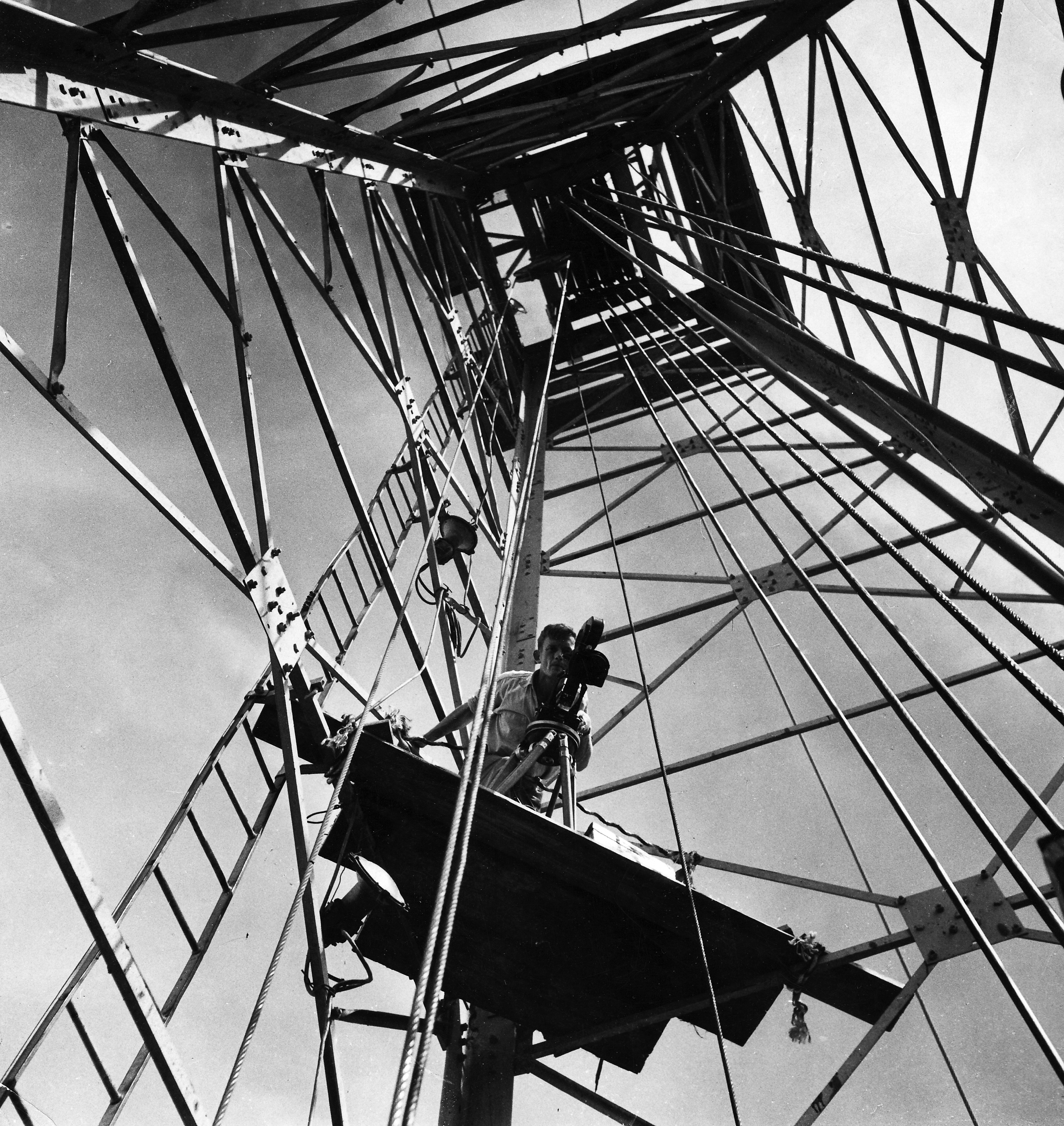Yet just as the alligator is ultimately killed in Louisiana Story, when the boy’s father intervenes, the oil drilling succeeds when, according to the film’s narrative, the boy helps, seemingly connecting the natural and supernatural with the culture of modernism represented by the oil rig and its men. The boy, still enraptured by the derrick, climbs it as if it were a Christmas tree, and tries dropping salt in the well for good luck, spitting on the salt for good measure. The oilmen laugh when he tells the oilmen, but while the boy is at home peeling potatoes later, he tells his family, “I know she won’t go away.” Then they hear the drill. According to an onscreen newspaper headline, “angling the hold to bypass the pressure area,” saved the well and brings the oil drillers success.
Any connection between culture and nature ends once the oilmen test the oil and find it good. The lease money from the father’s contract buys groceries and a new pot for mom, and a new rifle for the boy, but the family members continue to speak Cajun without translation. Despite the relative prosperity the lease money brings to the family, the last two scenes from the film perpetuate the separation between nature and culture and suggest that human intervention—even oil drilling—can leave the natural world pure and untouched.
In the first of these scenes, the boy sees his raccoon in the tree, complete with the rope collar around its neck, so boy and ‘coon are reunited and, consequently, the boy is reconnected with the natural world. In the second and last of these two scenes, the derrick leaves slowly, and oil is pumped through a pipeline under the bayou and hidden from the natural world. The boy and his pet watch the process and wave goodbye to the rig, its oilmen and the culture they represent. Only a lone Christmas tree-like pole remains, and it is now more tree than derrick, a tangible claim in the film that human exploitation of nature’s resources can leave its pure innocence untouched.



No comments:
Post a Comment